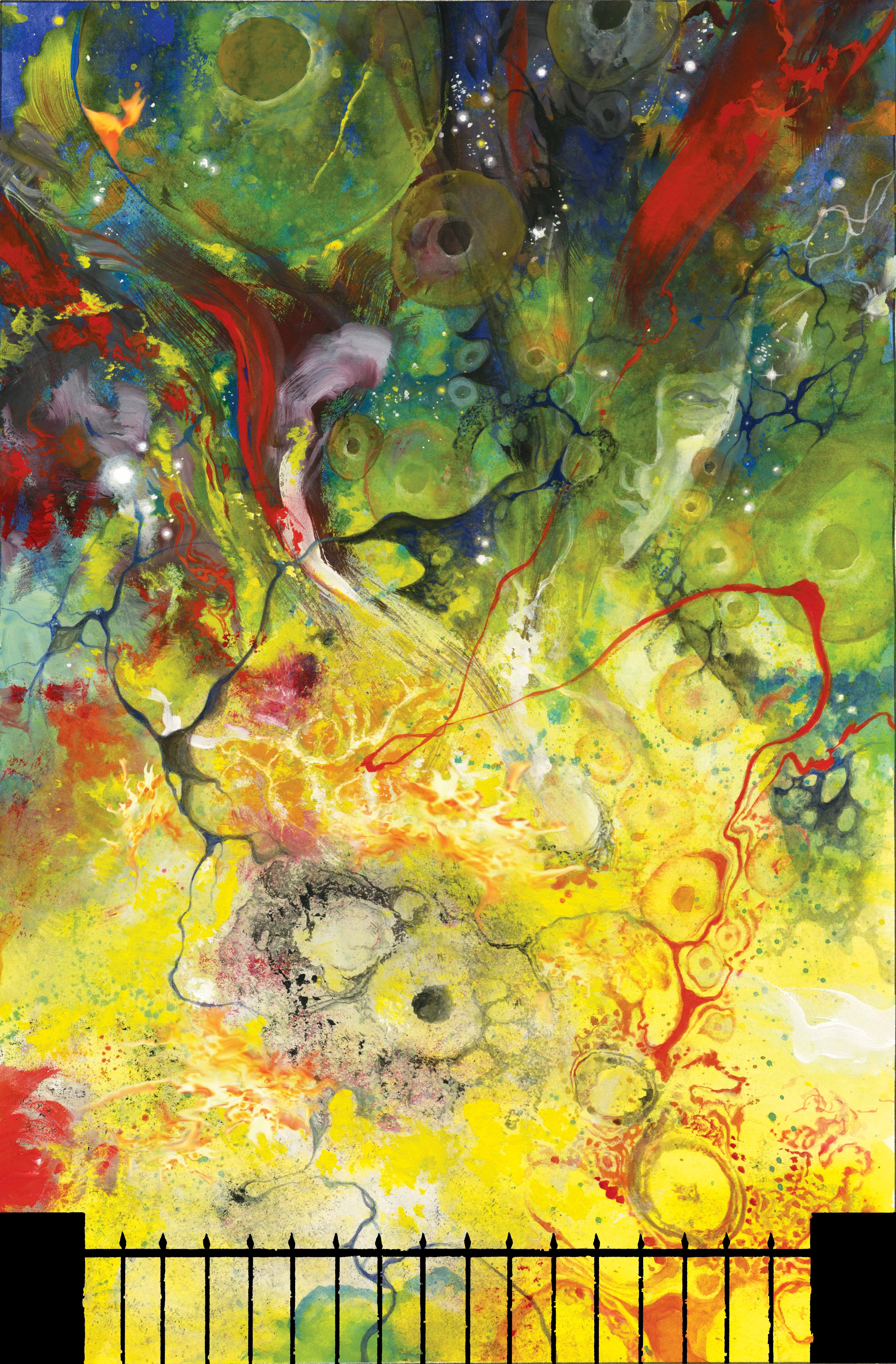
By: Neil Gaiman (story), J.H. Williams III (art), Dave Stewart (colors)
The Story: What’s a road trip without a hitchhiker?
The Review: I suppose we’ll have to resign ourselves to the fact that we’ll only get an issue from this series every few months—five between #1 and #2, and four between #2 and now. There are only three conditions under which that kind of timing is acceptable. First, it’s got to be expected; no one enjoys a surprise delay. Second, the creative team has to earn it; I think Gaiman-Williams get an easy pass here. Third, and most importantly, the issue you get hast to be worth the wait.
That means real progress in the story, but what that means in for the purposes of this title
is a little harder to make out. Sandman is not the type of series that advances by leaps and bounds. Its pacing is sedate and leisurely; at times, there’s little action at all. Yet all the while, Gaiman is moving the pieces of the plot, unobtrusively, like a chess player waiting for the precise moment to reveal that he’s had you in checkmate all along. Not very much may happen in an issue, but that’s not say it’s unproductive.
Dream’s encounter with the Fates is a perfect example. You’d be perfectly in the right if you come away from the scene wondering what the point is. It doesn’t yield any new information for our use, nor does Dream seek it. He politely declines their offer of knowledge then goes on his merry way without further conversation. But Gaiman doesn’t write unnecessary exchanges. Dream’s dismissal of the Fates highlights his know-it-all attitude; when the crone of the Fates warns him that his path will lead him to his death, he replies a bit snootily, “I believe the same can be said of all paths, Lady.”
That same pride manifests more than a few times in this issue. To the two aliens who try to waylay him, he proclaims his inability to die the normal way. To the metallic beetles who arrive to participate in the universe’s end, he merely laughs when they suggest killing him themselves. That pride will be his downfall, no doubt, just as it was when two gods took over his own realm and, despite needing a favor from Desire to get it back, Dream claims, “I believe I was quite capable, given enough time, of rescuing myself.” Dream may chalk his earlier defeat to youth, but he’s much older now and still as arrogant.
Same goes for his selfishness. Even, he has to admit that he treated Alianora, the lover sent by Desire to free him, quite cruelly. Despite all she gave up for him, by the end of their relationship, she’s been reduced from a being of light to one as gray and shadowy as everything else in his world. To her sad entreaties, he has only one word: “Go.” He’s equally as short when Hope, a girl he and Cat-Dream pick up along the way, suggests he came to save everybody: “I’m not.” He makes it very clear he’s in this only to ensure he’s no longer inconvenienced.
But the very presence of Hope is proof that Dream’s not entirely heartless. Indeed, his better side is manifested in Cat-Dream, who allows Hope to ride him when Dream says she’s too little to keep up with them, who answers her questions when Dream abstains, who watches over her while Dream conducts his own affairs. It’s also Cat-Dream who presses Dream to reflect on Alianora’s fate, even though, if left to him, Dream would have left that part out altogether.
If the months-long wait is for Williams’ art, I think it’s worth it. His richly detailed work gives comic book art a good name, nearly making up for whole armies of DC house artists. His range is extraordinary; as Gaiman describes the various beings participating in the end of the universe, Williams flashes through wildly different styles: the clear, undulating lines of retro sci-fi; the rustic, textured look of high fantasy; the ethereal, gaseous forms of magical realism; the sharp, bold figures of superheroes. And dear, poor, overworked Stewart, playing with every hue available, putting thought into his choice of colors for something as minute as the patterns in an inconsequential character’s cloak. You may have to wait months for an issue, but it’ll take at least one or two to appreciate all the little touches in the art.
Conclusion: The art guarantees that every issue will always be extraordinary, but the writing has all the mystery and satisfaction of a well-crafted novel.
Grade: A-
- Minhquan Nguyen
Some Musings: – Excellent prose is hard to come by in comics, but Gaiman seems to be supplying nearly all of it. In describing the beings gathering at the end of the universe:
“Some of them travel faster than light, faster than thought, faster than the void. Others, impelled by prophecy, began their journeys in an earlier age of the universe, and have travelled here frozen. Some are distant descendants of those who set out to take part in the final battle, or to observe it. There are wave riders and planet eaters. There are ships that live and warriors who are worlds.”
Filed under: DC Comics, Reviews, Vertigo Tagged: Dave Stewart, DC, DC Comics, Desire, Dream, J.H. Williams III, Neil Gaiman, Sandman, The Sandman: Overture, The Sandman: Overture #3, The Sandman: Overture #3 review, Vertigo, Vertigo Comics